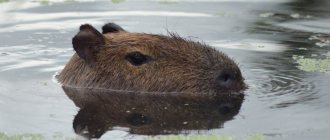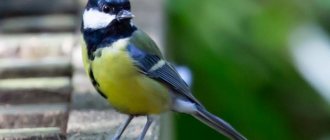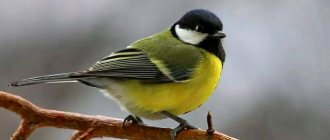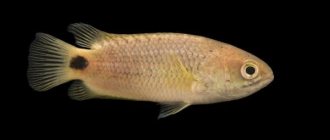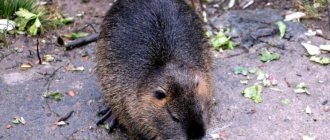Today, many pet owners opt for exotic pets: spiders, snakes, snails or even dangerous predatory lizards. Such domestication is increasingly gaining momentum, but is not always successful. Both veterinarians and zoologists never tire of drawing the attention of future owners of such far from ordinary pets to the fact that it is very important, before the animal appears in the house, to carefully study all available information about it: the nuances of keeping it at home, an acceptable diet, the stage of reproduction and possibilities taming a representative of the exotic. Only after this can you make an informed decision - whether it is worth getting an animal or whether the people living in the house will not be able to bear such a burden.
For those who want to keep a monitor lizard at home, valuable information is provided below. What do you absolutely need to know about this lizard species? How to provide her with the most comfortable conditions on your territory? What and how often to feed? And finally, how to handle it competently and safely for both parties?
Representatives of monitor lizards for home keeping
It is known that these lizards usually get used to people well, which becomes the main argument for keeping them in your home. Monitor lizard lovers hope to take a small monitor lizard, tame the predator and make it tame, completely accustomed to people and not perceiving them as an object of aggression. This is partially possible. Some species of monitor lizards do not exceed 5 kg in weight, and their body length usually varies within 1 meter. This size of reptile suits people who want to keep it in their own home. The appearance of these monitor lizards is also attractive: a beautiful slender body of an original, unusual color for lizards. As for temperament, it can be restrained: along with courage, animals are quite timid.
Common tegu
This representative of monitor lizards reaches a length of 1.2 meters with a body weight of no more than 5 kg. The standard color for them is brownish-black with a blue tint (hence the second name - blue tegu). On the back of the predator there are 9-10 transverse stripes in the form of yellow spots. They can also be placed on the tail or on the back of the lizard’s head.
Steppe (Cape) monitor lizard
The maximum body length of a pet is 110 centimeters (excluding the tail), but if you measure the tail, then the total length of such a monitor lizard will already be a full 2 meters. Their color can vary from gray to brown, with the same yellow spots, but also a dark edging. The tail has alternating rings of brown and yellow shades. This oviparous species of reptiles can produce from 15 to 30 eggs in one clutch.
Water monitor
This monitor lizard lives in an aquatic environment - therefore, in order to provide it with comfortable living conditions, the owner will have to purchase not a terrarium, but an aquarium. By nature, aquatic lizards are calm and balanced. They are interested in only two needs in life: the constant availability of food and clean water in the aquarium. As for nutrition, they, like land animals, are unpretentious in their choice of food (the diet is standard).
General description of the species
Monitor lizards of this species reach a body length of 1.5 to 2 m (including the tail). Under natural conditions, they rarely grow to 1.5 meters due to lack of food, drought and other unfavorable factors, which can be eliminated when kept at home.
The reptile has a relatively short and stocky body , covered with scaly skin of a brownish hue with lighter spots and stripes. The belly of the monitor lizard is slightly lighter - yellowish or grayish with the same markings, but not as pronounced as on the back. The paws are equipped with tenacious long fingers with sharp claws.
The reptile's head is relatively short compared to the body, and the slit-like nostrils are set at an angle. The reptile's tail is laterally compressed and has a double crest on its upper side.
The natural distribution area of these lizards is the subtropical and tropical zone, including the countries of the African continent (Nigeria, Sudan, Congo, Kenya). Monitor lizards prefer to settle in rocky areas, foothills, dry savannahs and forests. They are very active during the day, but at night they hide in burrows that they dig themselves or occupy ready-made shelters for rodents. Sometimes they settle in natural rock crevices, under the roots of trees or bushes.
The Cape monitor lizard is diurnal and burrows into holes at night.
The land lizard is characterized by a terrestrial lifestyle, although many specimens like to take long baths, lying in warm water. In addition, while tracking prey, they are able to climb small trees. In very hot weather, the Cape monitor lizard hides in a hole , emerging from there only in the evening, when the temperature drops significantly. The peculiarities of this reptile include territorial attachment - it almost never leaves the borders of its territory.
In biotopes inhabited by monitor lizards, their natural diet is based mainly on carrion, but since these are predatory reptiles, they are not averse to hunting insects, amphibians, crustaceans and even small rodents. After satiation, they seek a quiet place to sleep and peacefully digest their food. If the prey was large enough, the monitor lizard may not feel hungry for a week and a half, after which it goes fishing again.
Terrarium for a land monitor lizard
To provide your pet with comfortable living conditions, you will have to buy a terrarium for it. It is better to choose horizontal models with dimensions of at least 120x60x50 cm.
They must be equipped with heating, for which special thermal mats, thermal cords or heating lamps are used. During periods of activity of an exotic pet, it is necessary to heat it in this way during the day, about 12 hours. It is also important to install ultraviolet lamps, which should work all day long (even if it seems to you that the lizard has enough natural light). At night, the air temperature in the terrarium should not exceed 20 degrees, and during the day – 28.
A few words about walks
Some owners regularly walk their monitor lizards. To do this, you need to purchase a correctly sized harness for kittens. Lizards are skilled at backing up, so they should not be left outside unattended. It is advisable to walk with the reptile in warm weather.
In the summer, sunbathing is recommended for the monitor lizard. But a lizard accustomed to artificial ultraviolet light should be accustomed to the real sun gradually so as not to cause burns. At first, you can limit yourself to fifteen-minute walks, gradually increasing the time spent in the fresh air.
Temperature and humidity
Those who have experience in keeping monitor lizards must pay attention to strict adherence to the temperature regime in the terrarium. However, it is important not only to maintain a constant temperature, but also to ensure that in the warmest corner of the reptile’s home the temperature is 30 degrees, and under the lamp - all 40 during the day and 25 at night. Such temperature diversity in one territory will allow the lizard to choose the optimal regime according to its condition and mood. Under the lamp, so that the monitor lizard can bask, you can install driftwood, natural stone or a special shelf. To achieve comfortable humidity, it is enough to spray the bottom of the terrarium with slightly warm water from a spray bottle 1-2 times a day (it is best to line the bottom with a layer of gravel or sand).
About the features of care
Monitor lizard needs attentive home care.
- You need to clean the terrarium every day, and also monitor the readings of the climate control devices.
- During molting of a reptile, you need to try not to create stressful situations for the animal, because its body is now subject to changes.
- For better socialization of your pet, go for walks with him from childhood and let him get used to other people so that he does not treat others aggressively.
- Take your pet for a walk only on a leash, since, despite its apparent slowness, the lizard can easily run away from its owner at the sight of danger, and it will be quite difficult to find it.
- In the cold season, warm up the terrarium with incandescent lamps, since in our climatic conditions the monitor lizard needs additional heat.
Monitor lizard behavior (waking and hibernating)
The experience of monitor lizard owners shows that it is more comfortable, calmer and safer to keep several monitor lizards (if you decide on two or three at once) strictly alone, no matter what age and gender they are. For those who plan to breed predators, it is enough to know that the male and female are brought together exclusively at the moments of mating; the rest of the time they must live separately from each other due to their difficult character and behavior corresponding to a dangerous predator.
Let us remember that in winter monitor lizards usually hibernate, which is often confused with death or eternal sleep.
If the lizard’s activity has decreased significantly, it seems to have become numb, but continues to show signs of life (breathing, heartbeat and other indicators), you can reduce the temperature in the terrarium to 15-18 degrees during the reptile’s wintering period. But the humidity should be maintained at the same level, or at least continue to spray the soil and walls of the pet’s home with warm water at least once a week.
As soon as the lizard’s torpor ends or you decide to interrupt its sleep, you need to gradually transfer it to its previous conditions of detention (slowly and carefully increase the temperature by adding ultraviolet light, heating the terrarium and proper diet). Veterinarians advise that after such a long winter hibernation, be sure to give the monitor lizard food with additional vitamin E content (the first couple of weeks after awakening).
Wintering of predators stimulates their reproduction processes. And experts mate them precisely after the lizards have come out of hibernation. But if you have a single monitor lizard as a pet, and you are not going to buy him a mate or nurse tiny monitor lizards, you can generally discourage his desire to hibernate. If you do not create favorable conditions for winter sleep for your pet, he simply will not fall asleep. And you won't harm him by doing this.
Diet of monitor lizards
The diet of these reptiles is identical to the set of foods for ordinary lizards. They are unpretentious in food and, along with fresh meat, they can also eat tasty game (in nature, they often dine on carrion - hence the enzymatic digestive system, perfectly adapted to digesting already decomposing food). At home, of course, monitor lizards are not fed carrion, but the owners of these exotic animals know that their pets always eat everything.
To pamper your lizard with a variety of foods, you can offer it mice, chickens, frogs, small vertebrates, insects (including cockroaches and crickets), earthworms, fish, pieces of raw meat and even chicken eggs.
Of course, a healthy and vigorous monitor lizard will always show a desire to eat, but this does not mean that you need to overfeed it: such predators are prone to obesity, which can lead to diseases that shorten the pet’s lifespan. The most acceptable feeding regimen is once a day or even 2 days. But drinking water needs to be changed constantly and make sure it doesn’t run out. From time to time you can pamper your monitor lizard with Borjomi mineral water.
If you add vitamin and mineral supplements to the diet, this will only improve the health of the predatory lizard.
What do they eat?
Monitor lizards are predatory animals. Usually they wait for the victim in ambush and attack it, making a swift rush.
The diet of reptiles is based on insects, invertebrates, mollusks, fish, turtles, rodents and other small mammals. Monitor lizards have a well-developed sense of smell and easily find masonry left by crocodiles, snakes and turtles. They swallow small prey whole, and tear off pieces from large animals.
Monitor lizards are cannibals. They quite often enter into fights with their relatives and eat their less fortunate rivals. Females can only eat the eggs that have hatched.
SNAIL
Taming monitor lizards
Already when buying monitor lizards, you need to know that their males are more aggressive in behavior than females. The latter have a calm character. Based on this, the choice of gender will directly affect the degree of taming of your pet. However, both of them love communication very much and have nothing against touching, hugging, stroking or even being held in their arms.
If you raise and care for your pet monitor lizard from an early age, you can trust that it will get used to you. But you shouldn’t even think that a predator has ceased to be one: if your lizard doesn’t like something, or gets offended by you, then she will instantly forget about all the good things that she receives from you every day, and will show that she is a wild animal with whom you should behave as carefully and carefully as possible. A dangerous pet has no place in families with small children, pregnant women or elderly people.
Features of life in nature
Living in nature, these large reptiles are characterized by a measured way of life and often do not disdain cannibalism, eating their young and other small lizards. Since these animals are predators, they prefer to eat meat, often a large individual can kill a bull with just one bite. He is capable of this thanks to the poison that drains the victim. In addition, in nature, monitor lizards are helped to survive by their dirty mouth - a mouth infested with bacteria does not allow wounds from bites to heal normally, which also weakens the bitten animal. In the wild, these reptiles behave moderately aggressively and can sometimes form monogamous pairs with females.
Did you know? Female monitor lizards can reproduce on their own, but in such cases the hatched individuals will be exclusively male.
Health problems in monitor lizards
The oral cavity of monitor lizards is often affected by stomatitis. The cause of such an inflammatory process can be not only an incorrectly selected diet, but also the pet owner’s failure to comply with the temperature regime in the terrarium. As a result of the disease, tissue death occurs in the lizard's mouth, accompanied by a disgusting purulent odor. Treatment for a monitor lizard will be the establishment of a balanced diet and the creation of favorable living conditions in its home. The wounds themselves are treated with a special cream, and in the presence of extensive ulcers, medical intervention by a veterinary surgeon is required.
In the process of obesity in predators, fat can be deposited on the belly and in the tail area - this interferes with the reproduction of reptiles and becomes the root cause of many diseases. When the level of uric acid in the blood of pets increases, gout develops, against the background of which the joints and kidneys grow in volume. Such diseases are treated by drinking plenty of fluids and using special creams. If it comes to arthritis, you will have to undergo surgery to get rid of acid crystals from the joints.
Where does it live?
Monitor lizards are heat-loving animals. They are found in the tropics and subtropics. The greatest species diversity is characteristic of Australia and the adjacent islands, but they also live in Asia and Africa.
Some species inhabit arid deserts. They feel great, for example, in open forests, savannas, and thorny bushes. But others are more moisture-loving and prefer to live along the shores of tropical reservoirs.
By the way, there are also arboreal species that spend most of their lives on tree branches.
Breeding monitor lizards
If you don't have experience in this area, it just won't happen. As soon as the animals have awakened from hibernation, they need to be placed in one large terrarium, where mating will take place.
After a successful process, after 1-2 months, the female lays eggs. Reptile owners should be aware that the expectant mother may refuse food altogether a month before laying. In order for young monitor lizards to hatch at home, it is necessary to incubate the eggs at a temperature of 28-32 degrees and a humidity of 80-90%. After 70-220 days, the cubs are born. Interestingly, the lower the temperature during this period, the greater the chance that males will be born. Note that doing all this in a tiny apartment is simply unrealistic.
So, in order to keep a monitor lizard at home, you need to know about a number of nuances of its life, behavior and temperament. This exotic pet is not so simple and will always remain a large predator. And if you decide to have one, be sure to create comfortable conditions for him: from a comfortable home to proper nutrition.
Reproduction
The breeding season for Cape monitor lizards, as well as the feasting period, is during the rainy season. When the male finds a suitable female, he follows her tirelessly, sometimes biting or scratching her neck and legs with his claws. In the end, the female gives the go-ahead for mating.
Female steppe monitor lizards dig nests and, as a rule, lay from 20 to 50 eggs. Other sources say that females dig nests 15-30 cm deep and lay no more than 15 eggs. Some females lay eggs in abandoned termite mounds. The eggs take five to six months to incubate. As a rule, the offspring hatch in March. The highest growth rate of young Cape monitor lizards is observed during the first two months of life.



